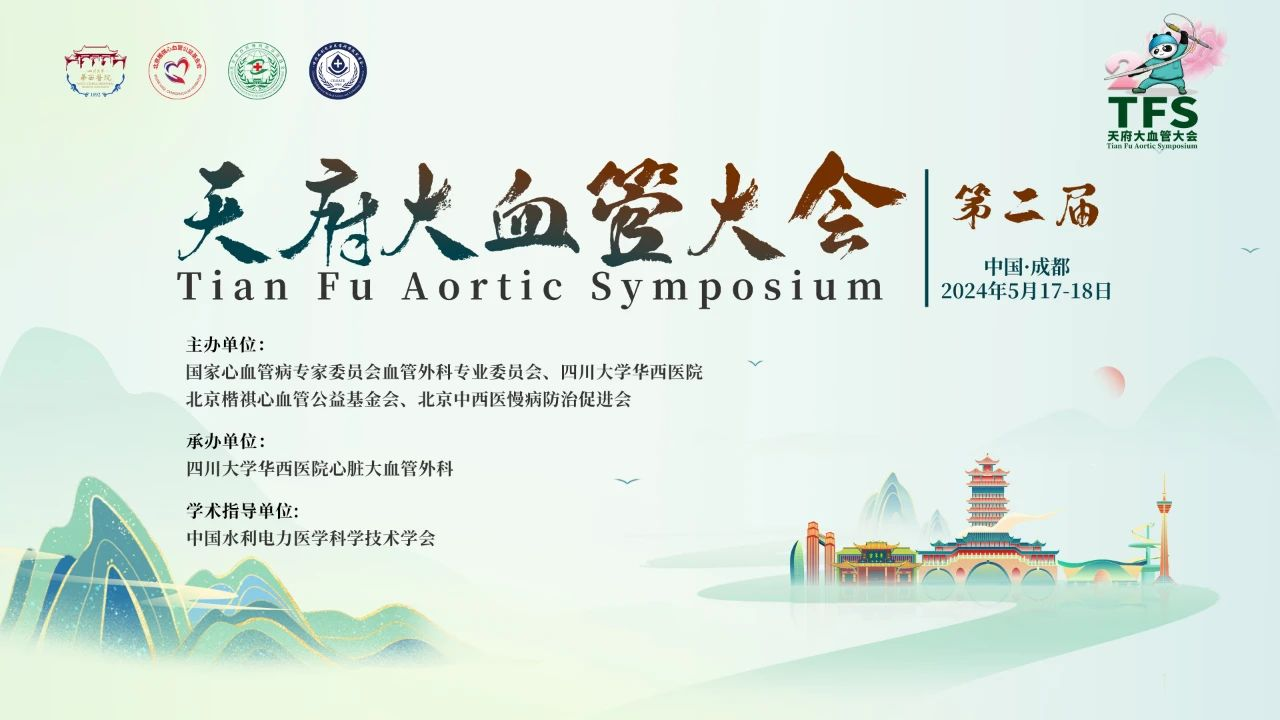
The 2nd Tianfu Vascular Conference (TFS 2024) was successfully held on May 17-18, 2024, in Chengdu. From the pinnacle of medical science, we foresee the future of the vascular discipline, recognizing the immense responsibility and honorable mission ahead. As members of the vascular field, we are tasked with advancing the discipline and improving diagnostic and treatment standards. In the future, we will analyze the content of TFS lectures to help you understand the most cutting-edge vascular treatment experiences.
In this series of articles, we will thoroughly analyze Professor Wang Ren’s presentation from Renji Hospital, affiliated with Shanghai Jiao Tong University School of Medicine, at the Tianfu Vascular Conference, exploring the clinical application experiences and outcomes of the Low Profile thoracic stent-graft.

Overview of Domestic Stent Development
Since 2014, domestic thoracic aortic covered stents have rapidly developed, with multiple brands introducing distinctive products, such as Castor, Talos, Fabulous, and RescSeal stents. These designs have been continuously optimized to meet complex clinical needs.
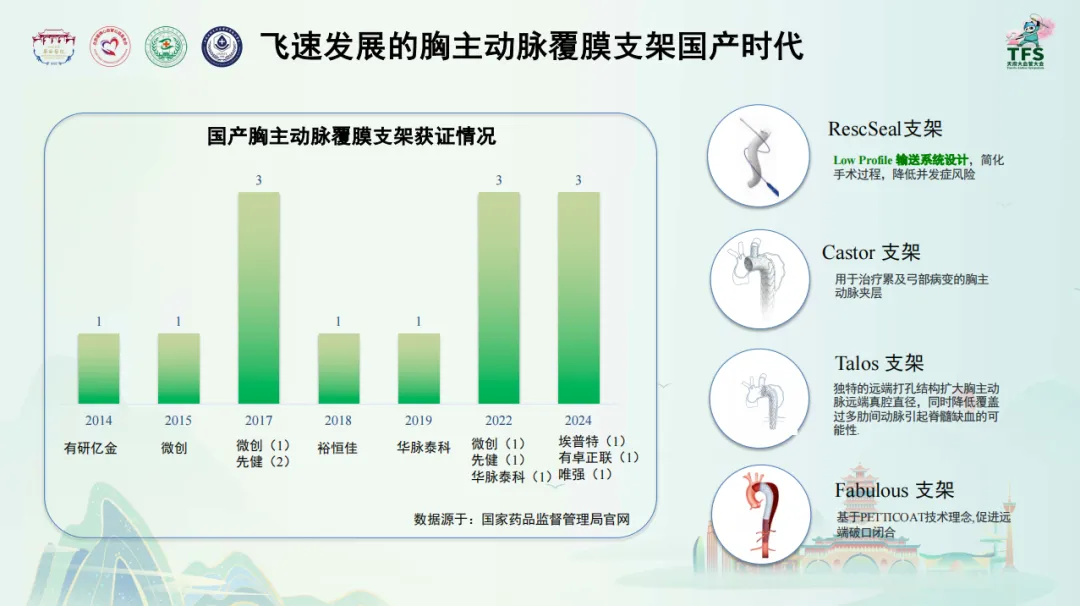
Low Profile Thoracic Aortic Covered Stent
The RescSeal stent system features a thinner external diameter and ultra-thin wall thickness, optimizing PET covered membrane density to reduce surgical complication risks. Its special bare stent design effectively minimizes the “bird’s beak” effect, reduces vascular injury, and enhances proximal adhesion, making it suitable for patients with difficult access routes.
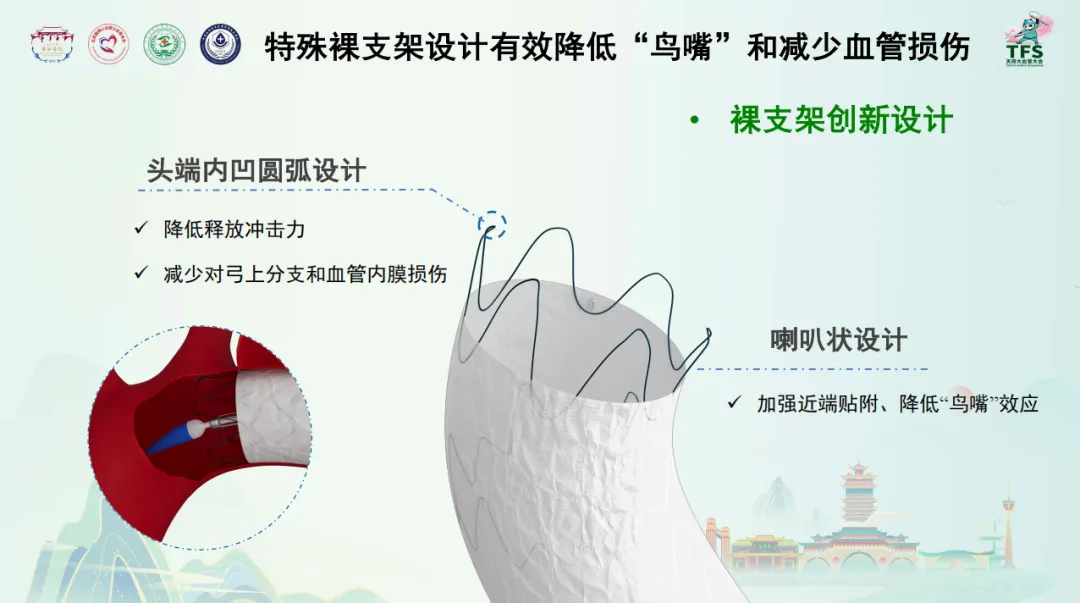
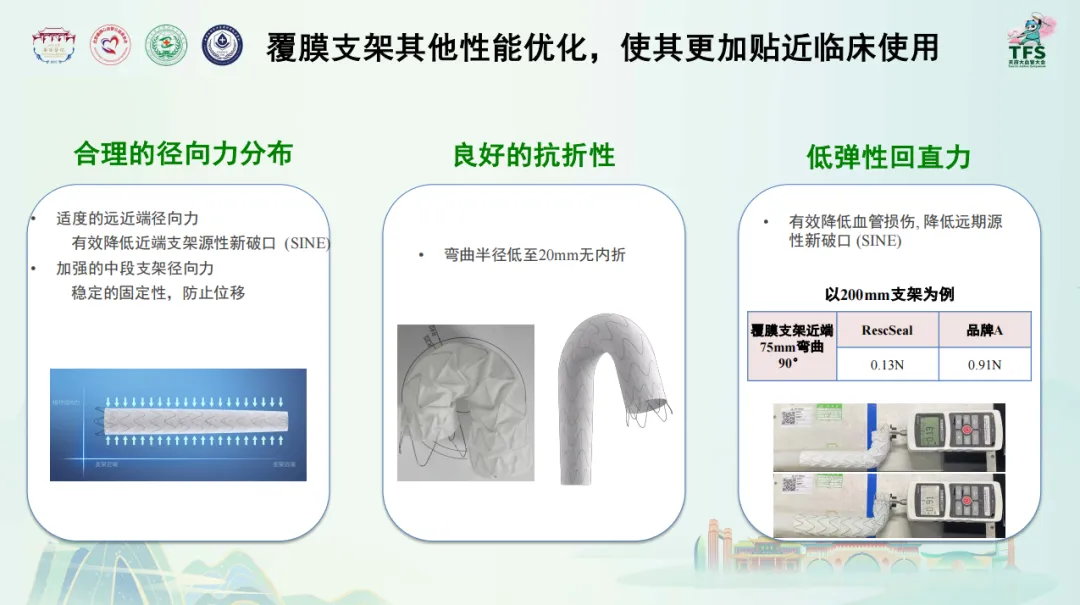
Clinical Case Studies
Case 1: Low Profile Stent for Ultra-Thin Access Vessels
• Patient: Male, acute Stanford type B thoracic aortic dissection involving thoracoabdominal aorta and right common iliac artery.
• Preoperative Diagnosis: The false lumen occupied the distal abdominal aorta to the right common iliac artery, with the left common iliac artery occluded and visceral arteries supplied by the true lumen.
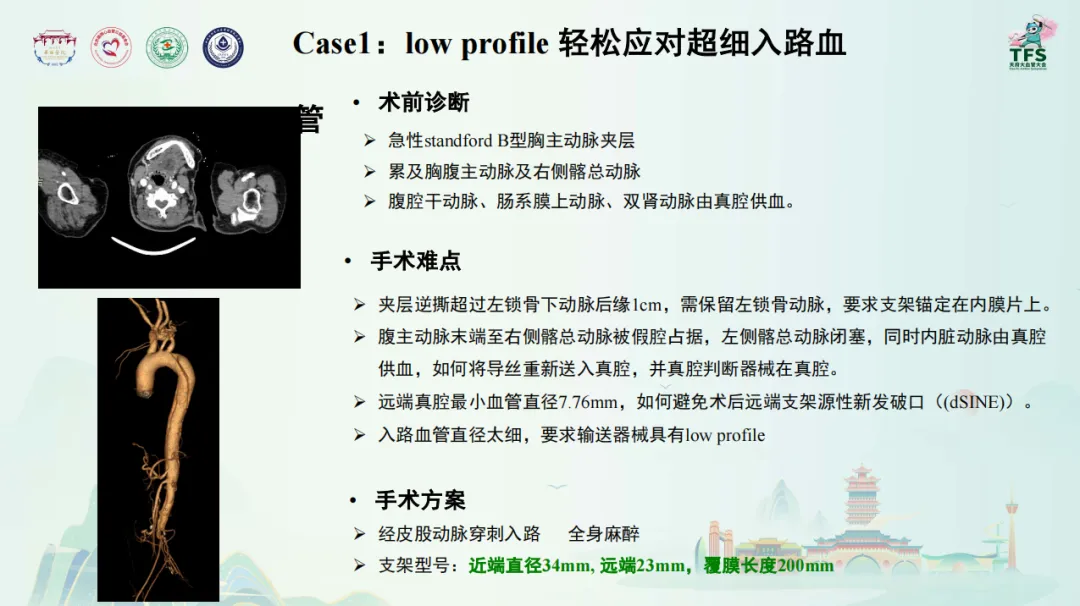
Surgical Challenges:
• The dissection extended 1 cm beyond the posterior edge of the left subclavian artery, necessitating preservation of the left subclavian artery and anchoring the stent on the intimal flap.
• The minimum diameter of the distal true lumen was 7.76 mm, requiring avoidance of new distal stent-induced entry tears (dSINE).
• The access vessel diameter was very small, requiring Low Profile delivery devices.
Surgical Plan:
• Percutaneous femoral artery puncture, general anesthesia, using a RescSeal stent with a proximal diameter of 34 mm, distal diameter of 23 mm, and a covered length of 200 mm.
Postoperative Results:
• Angiography showed no endoleak, and visceral artery perfusion was good. Follow-up at 12 months showed no abnormalities, with complete thrombosis of the false lumen, an increase of 54% in the minimum diameter of the true lumen, and an 82% decrease in the maximum diameter of the false lumen.
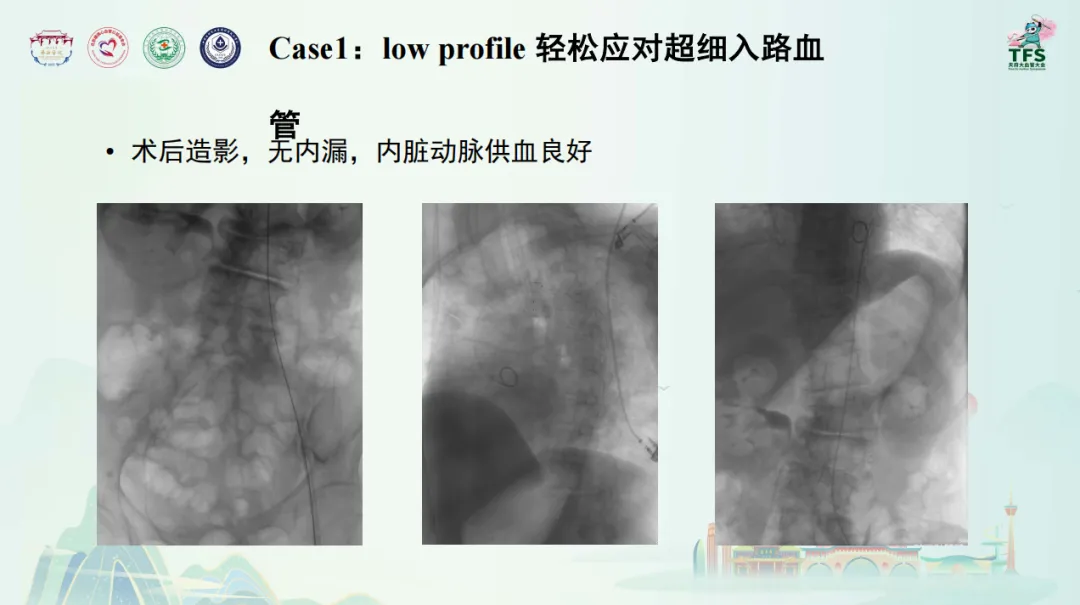
Pre- and Postoperative Comparison:
• Preoperative: Left iliac artery occlusion, aortic dissection with a maximum diameter of 35.7 mm, minimum true lumen diameter of 7.76 mm, and maximum false lumen diameter of 34 mm.
• Postoperative: Left iliac artery opened, aortic dissection with a maximum diameter of 32.1 mm, minimum true lumen diameter of 12.5 mm, and maximum false lumen diameter of 7.11 mm.
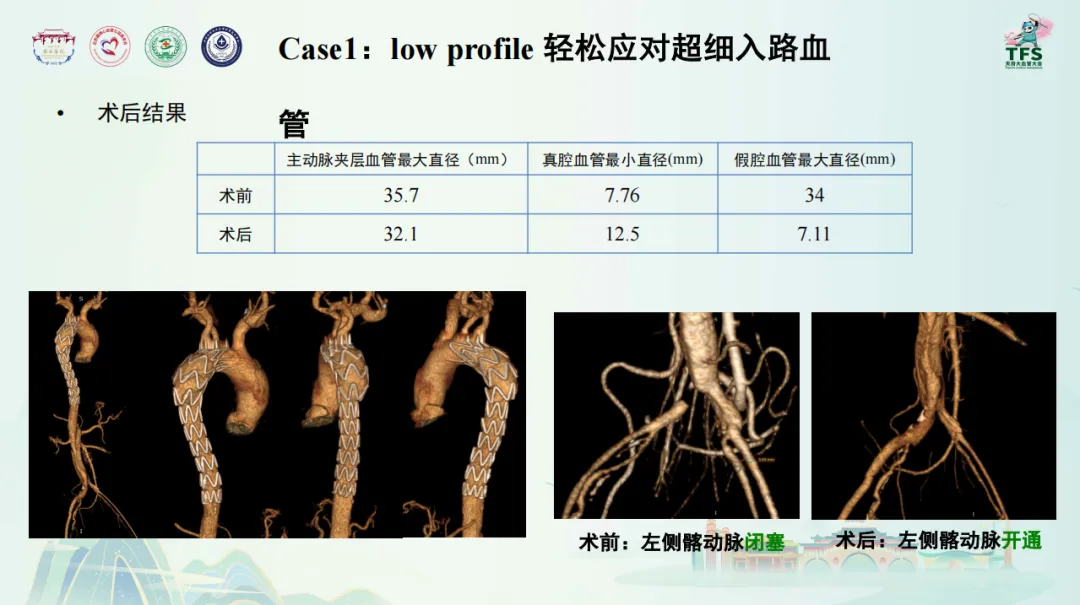
Summary and Outlook
The RescSeal™ thoracic aortic covered stent has demonstrated safety and efficacy in treating type B dissection. Its Low Profile design is particularly advantageous for patients with tortuous and calcified access vessels. Advances in materials and engineering ensure the stent’s stability and efficacy in long-term follow-up while reducing complications.
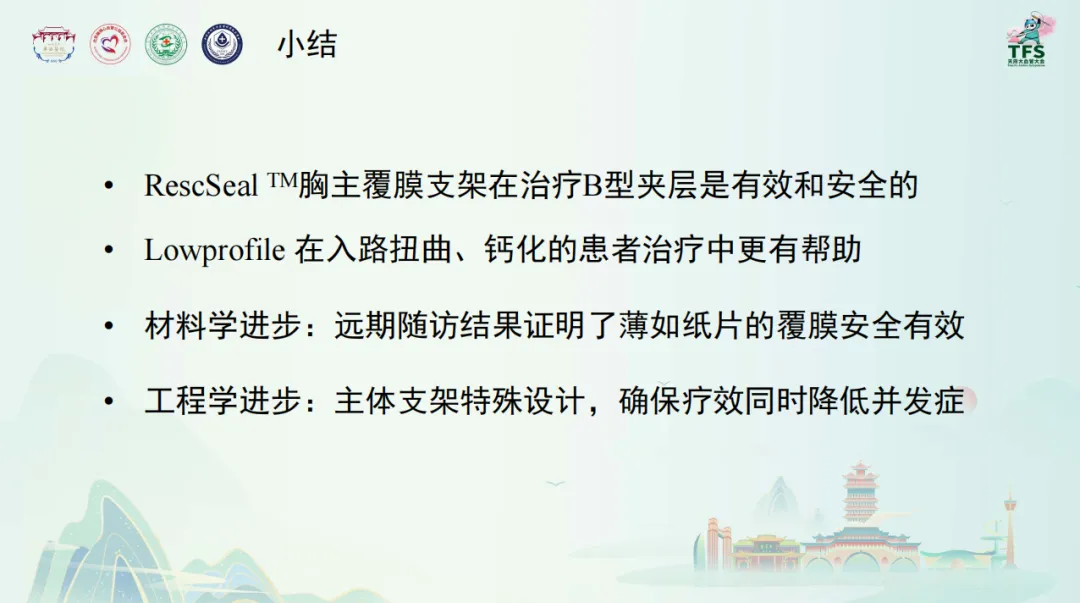
Contact Us
In the upcoming articles, we will continue to provide in-depth analysis on the clinical application of the Low Profile thoracic aortic stent. Stay tuned! If you have any questions or interests regarding the Low Profile thoracic aortic stent or the Tianfu Vascular Conference, please leave a comment or contact us via email at endovascluar@simtomax.cn. Thank you for your attention. Let’s work together for health!


